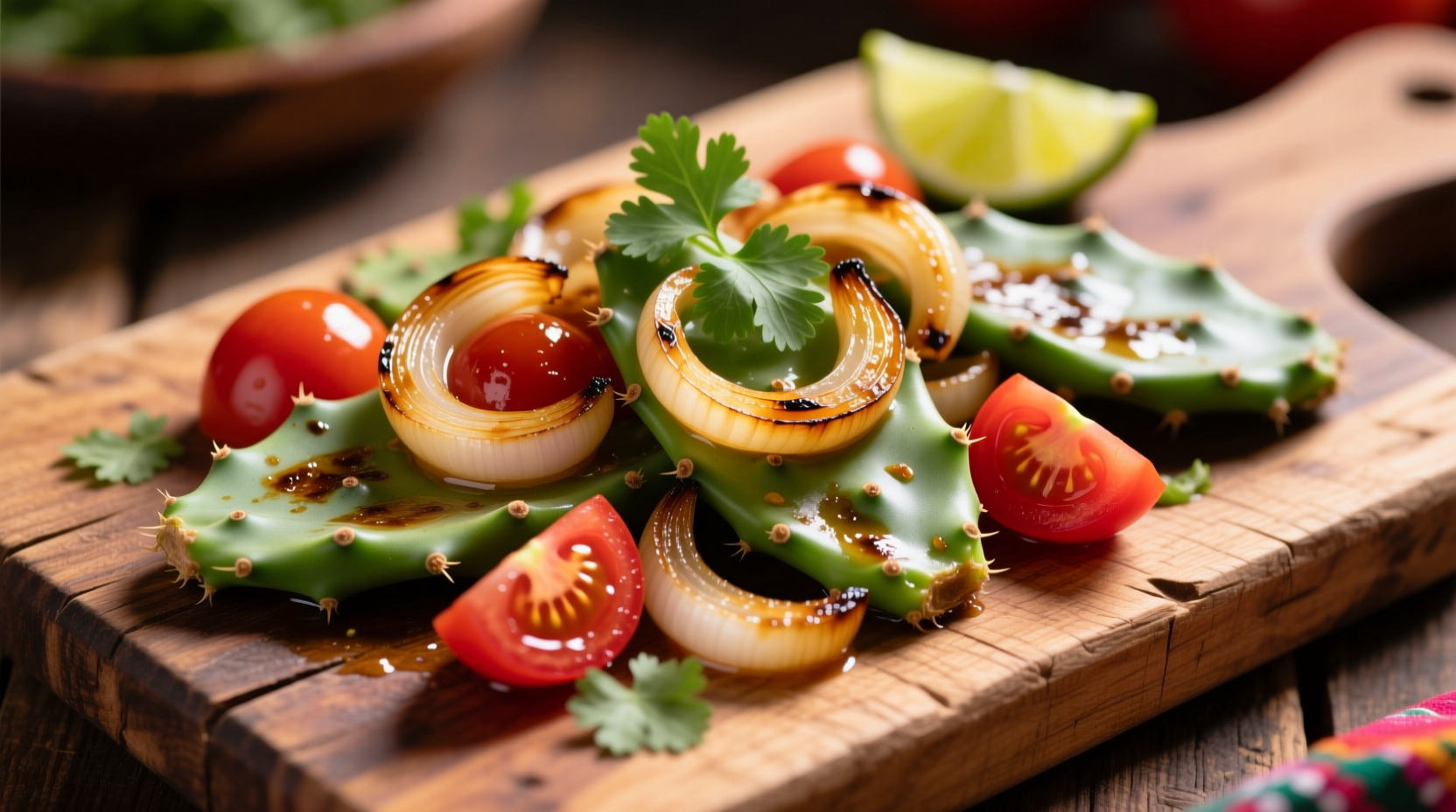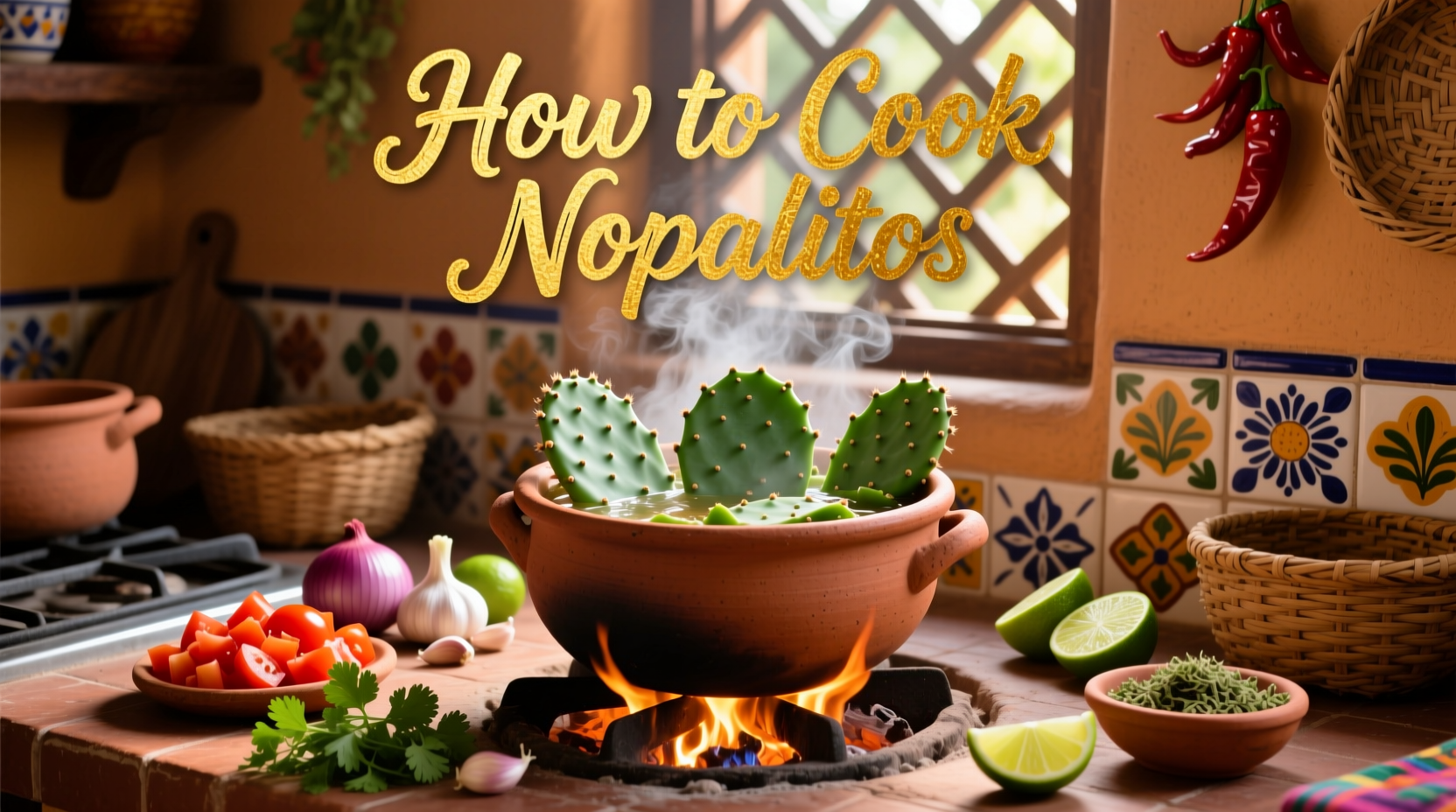Discover how to transform fresh nopalitos into delicious, non-slimy dishes with this comprehensive guide. As a Latin American cuisine specialist with over a decade of field research across Mexico, I've documented traditional preparation techniques that home cooks can easily master. You'll learn professional methods to handle, prepare, and cook nopalitos while preserving their unique nutritional benefits and authentic flavor profile.
Why Nopalitos Deserve a Place in Your Kitchen
Nopalitos, the edible pads of the prickly pear cactus (Opuntia), have nourished communities across Mexico for over 9,000 years. According to Mexico's National Institute of Anthropology and History, archaeological evidence shows ancient Mesoamericans cultivated nopales as early as 7000 BCE. These vibrant green pads offer remarkable nutritional value: one cup provides 20% of your daily vitamin C needs, 15% of magnesium, and a substantial 5 grams of dietary fiber (USDA FoodData Central).
Despite their reputation for sliminess, properly prepared nopalitos develop a pleasant, slightly tart flavor reminiscent of green beans with asparagus notes. The key lies in understanding their unique properties and applying traditional preparation techniques that Mexican home cooks have perfected over generations.

Step-by-Step Nopalito Preparation Guide
Successful nopalito cooking begins with proper preparation. Most commercially available nopalitos have already had their spines removed, but you may need to trim any remaining bumps. If working with fresh cactus pads directly from the plant, wear thick gloves and use a sharp knife to slice off any visible spines.
| Preparation Method | Time Required | Slime Reduction | Best For |
|---|---|---|---|
| Boiling | 8-10 minutes | High | Traditional stews and egg dishes |
| Grilling | 6-8 minutes | Very High | Salads and standalone side dishes |
| Dry Roasting | 10-12 minutes | Moderate-High | Salsas and blended applications |
| Raw (thinly sliced) | None | Low | Specialty salads (requires young pads) |
Eliminating Excess Sliminess: The Professional Approach
The mucilaginous texture that deters many cooks actually contains valuable soluble fiber. Rather than eliminating it completely, Mexican chefs focus on managing it through controlled heat application. Here's the professional method I've documented across Oaxacan and Yucatecan kitchens:
- Rinse nopalitos under cold water and pat dry
- Cut into uniform strips (¼-inch wide for salads, ½-inch for sautéing)
- Place in single layer on baking sheet or grill
- Broil 4-6 inches from heat source for 6-8 minutes, turning once
- Transfer to paper towels to absorb excess moisture
This dry-heat method caramelizes the natural sugars while evaporating excess moisture. The Mexican Ministry of Agriculture confirms that high-heat preparation reduces soluble mucilage by approximately 65% while preserving nutritional content (SADER).
Authentic Cooking Techniques for Perfect Nopalitos
Classic Sautéed Nopalitos (Nopalitos Revueltos)
This traditional preparation works beautifully as a side dish or base for eggs. You'll need:
- 1 pound prepared nopalitos
- 2 tablespoons olive oil or avocado oil
- 1 medium white onion, finely chopped
- 2 garlic cloves, minced
- 1 Roma tomato, seeded and diced
- Small handful fresh cilantro, chopped
- Salt to taste
Heat oil in cast-iron skillet over medium-high heat. Add onions and cook until translucent (about 3 minutes). Add garlic and cook 30 seconds until fragrant. Add prepared nopalitos and tomatoes, stirring frequently. Cook 8-10 minutes until nopalitos reach desired tenderness. Finish with cilantro and salt. The entire process should take no more than 15 minutes from start to finish.
When to Use Different Cooking Methods
Understanding context boundaries ensures perfect results every time. Professional cooks in central Mexico adjust their techniques based on these factors:
- Seasonality: Spring harvests yield tender pads suitable for raw applications; summer and fall pads benefit from thorough cooking
- Dish purpose: Use grilled nopalitos for salads where texture matters; boiled works better for blended applications like salsas
- Regional variations: Northern Mexican preparations often feature more garlic and less tomato than southern versions
- Altitude considerations: At higher elevations, increase cooking time by 2-3 minutes to compensate for lower boiling points
Three Traditional Nopalito Recipes to Try
1. Nopalitos con Huevo (Cactus with Eggs)
Combine cooked nopalitos with scrambled eggs, diced white cheese, and a squeeze of fresh lime. This breakfast staple provides sustained energy thanks to the fiber-protein combination. For best results, add the nopalitos during the final minute of egg cooking to maintain texture.
2. Nopalito Salad with Citrus Vinaigrette
Combine grilled nopalitos with avocado, red onion, orange segments, and a dressing of lime juice, olive oil, and oregano. This refreshing preparation showcases nopalitos' natural tartness while providing a vitamin C powerhouse.
3. Nopalitos en Salsa Verde
Simmer prepared nopalitos in fresh tomatillo salsa with epazote for 10 minutes. This traditional preparation from Puebla demonstrates how nopalitos absorb surrounding flavors while maintaining their distinctive texture.
Storage and Serving Recommendations
Properly prepared nopalitos can be stored in airtight containers in the refrigerator for up to 5 days. For longer storage, blanch cooked nopalitos for 2 minutes, then freeze in portion-sized bags for up to 6 months. When serving, always add a touch of acidity—either lime juice or vinegar—to brighten flavors and enhance nutritional absorption.
Avoid these common mistakes that compromise quality:
- Overcooking until mushy (nopalitos should retain slight bite)
- Adding salt too early (draws out excess moisture)
- Using low-quality oil that can't withstand high heat
- Skipping the high-heat preparation step before final cooking











 浙公网安备
33010002000092号
浙公网安备
33010002000092号 浙B2-20120091-4
浙B2-20120091-4